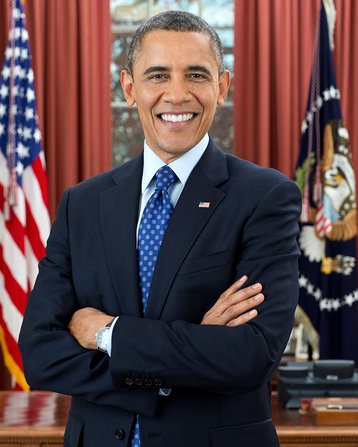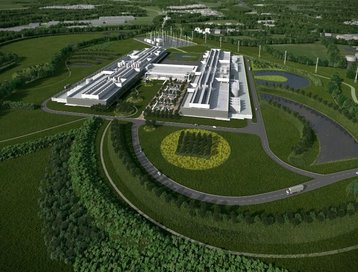In the thick of this exciting election year, I thought it’d be interesting to turn to politics. Not to be so foolhardy as to endorse a candidate or predict a winner, mind you, but to recall a telling moment just prior to the inauguration of our current president.
It was December 2008, when Barbara Walters interviewed President-elect Barack Obama and his wife Michelle during a prime time ABC television special. At that time, Obama had yet to be sworn in for his first term and hadn’t moved into the White House. But Barbara asked if he had plans to make his new 1600 Pennsylvania Avenue address more environmentally friendly in order to set an example for other Americans.
“Each of us has a role to play in not being wasteful when it comes to energy,” Obama responded. “For us to turn off the lights when we leave the house, to make sure that we’re unplugging the chargers that we use on our smartphones.”
Connectivity and conservation are not mutually exclusive
If you’re still reading this, chances are you’ve resisted the temptation to reach for your iPhone to ask Siri the downtown address of that great Thai restaurant whose name you can’t remember. Have yet to IM your co-worker to meet you there for lunch at noon. Nor, like me, haven’t succumbed to distracting yourself from work by watching on-demand video replays on your tablet-laptop hybrid of the recent Boston Beanpot hockey tournament. Which, especially for your faithful correspondent, who happens to be an alum of each of this year’s finalists, couldn’t possibly have ended better. BC over BU in OT.
Lest we forget, this interplay of instantaneous connectivity, communication, information and entertainment at our fingertips — and even more than that negligently plugged-in smartphone charger that our President referenced eight years ago — requires energy, and lots of it. The more we connect to the Web, the bigger the job is for data centers. The bigger the job for data centers, the more energy is required to operate them, which, in turn, means facilities run the risk of continuously expanding their carbon footprint. As I’ve said before, behind every online experience are global networks, data centers and cloud-based services hosted on servers around the globe. These online activities have an energy price tag and a concomitant effect on the health of our planet.
Feeling guilty as you check and recheck your Twitter feed, or post your daughter’s hopefully viral wedding video on Facebook? Well, you needn’t feel that way. That’s what psychologists term “irrational guilt.” You see, ubiquitous connectivity and energy conservation are not mutually exclusive, but more on that later.
Web-scale data centers, like the Government, commit to green
Fast-forward from that prescient Barbara Walters interview eight years ago to last March, when Obama turned his energy consciousness from the digital devices in our hands to the information hosting and delivery services at our nation’s data centers, when he signed an executive order laying out his vision of sustainability for the next decade, beginning this fiscal year. While the President’s executive order targeted only government facilities and infrastructure, the section concerning improving data center energy efficiency staked out a bold policy on green initiatives. His measures called to ensure that federal CIOs promote data center energy optimization, efficiency, and performance; that the government would install and monitor advanced energy meters in all data centers by fiscal year 2018; and establish Power Usage Effectiveness (PUE) targets of 1.2 to 1.4 for new data centers and less than 1.5 for existing data centers.
In the private sector, the push for green data centers has become even more aggressive, as companies including Facebook, Google and Intel move to help expand mobile connectivity and Web use, while decreasing their carbon footprint. Moreover, announcements of investments in renewable energy projects by web-scale data center operators like Amazon, Microsoft and Apple are becoming more frequent as these players strive to deliver on their carbon-neutrality commitments.
Facebook’s newest data center, in Clonee, County Meath, Ireland, will be powered by 100 percent renewable energy, taking advantage of Ireland’s ample wind resources. This will help the company reach its goal of powering 50 percent of its infrastructure with clean and renewable energy by the end of 2018.
Apple recently announced plans to build two new eco-friendly data centers in Europe. Each facility will rely solely on clean energy and will store the software required for users to access iTunes, iMessage and Siri in Athenry, Ireland, and Viborg, Denmark.
Doing the right thing, right now
While developments such as these are surely great news, data center operators can implement green strategies in their existing facilities tomorrow that will greatly reduce energy consumption and cooling expenditures. For one, boosting airflow management can reduce energy consumption by 40 percent. They can consolidate servers, a measure the President’s executive order stipulates, to reduce energy consumption from 10 to 40 percent. Raising internal temperatures in data centers can save 60 percent on cooling costs. And by exploring and implementing innovative cooling technologies, they can use up to 95 percent less energy.
IT equipment manufacturers are innovating a new generation of data center, software tools, and networking products that are more energy-efficient than preceding technologies. Simply replacing an older server with today’s latest, advanced technology can utilize 30 percent less energy. To put that into perspective, that’s the equivalent of the emissions from 100 gallons of gasoline and enough electricity to avoid 1 ton of carbon emissions. This move effectively saves up to $480 dollars over the expected four-year lifecycle of the server. While on the surface this may not seem like much of an impact to the bottom line, consider that a data center can have thousands of servers in operation, translating to enormous cost reductions.
Data center energy efficiency calls for an intelligent combination of the automated monitoring of power conditions and the ability to adjust power, temperatures, computer performance and workloads continuously. Rampant energy consumption can be effectively combated with a combination of micro-level controls for individual servers, power distribution units, air-flow controllers and cooling units as well as macro-level controls and policies for racks of servers and entire data centers. With the potential for rapid returns on investments, the world’s largest data centers represent the vanguard of energy management best practices adoption, embracing not only the business case, but also the planetary imperative of environmental responsibility.
So Google that restaurant, IM your co-worker, run that bandwidth-intensive killer app that your business relies on, and Skype on the weekend with your favorite nephew spending his senior year abroad unfettered by unnecessary guilt. The power usage associated with these everyday online connections can be responsibly managed by progressive data center operators that are implementing holistic power management solutions, methodologies and products to create energy efficiencies.
This is a good thing, the right thing, both for the personal and professional activities we pursue on the Web, and for the neighborhoods, towns and metropolises that comprise our global community and environment.
Jeff Klaus is the general manager of Data Center Manager (DCM) Solutions, at Intel Corporation. Follow us on Twitter




